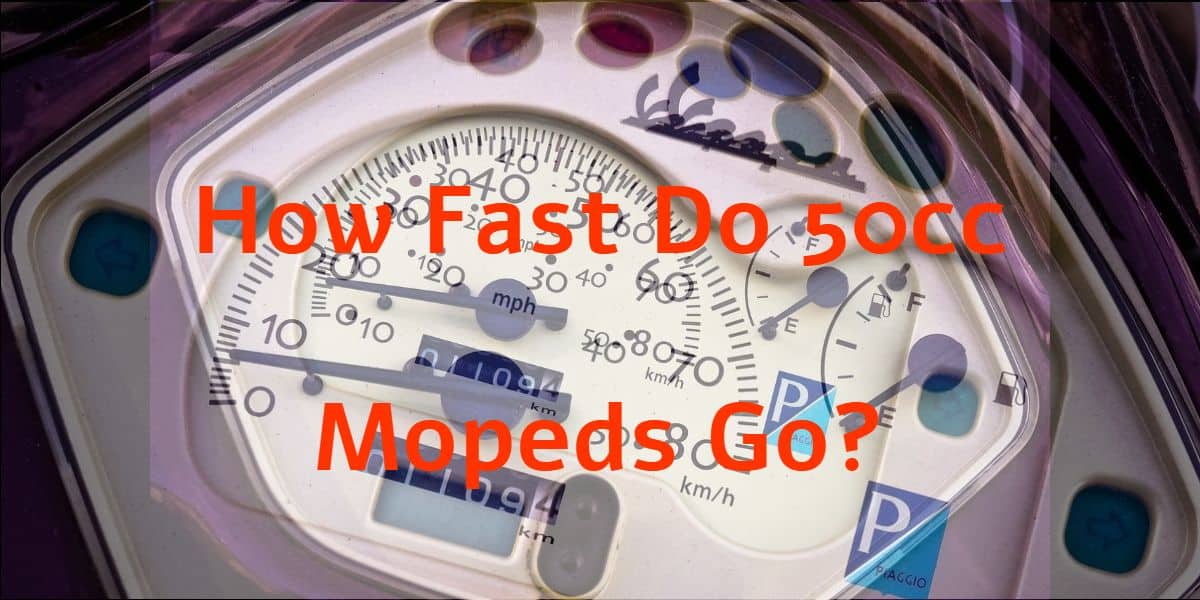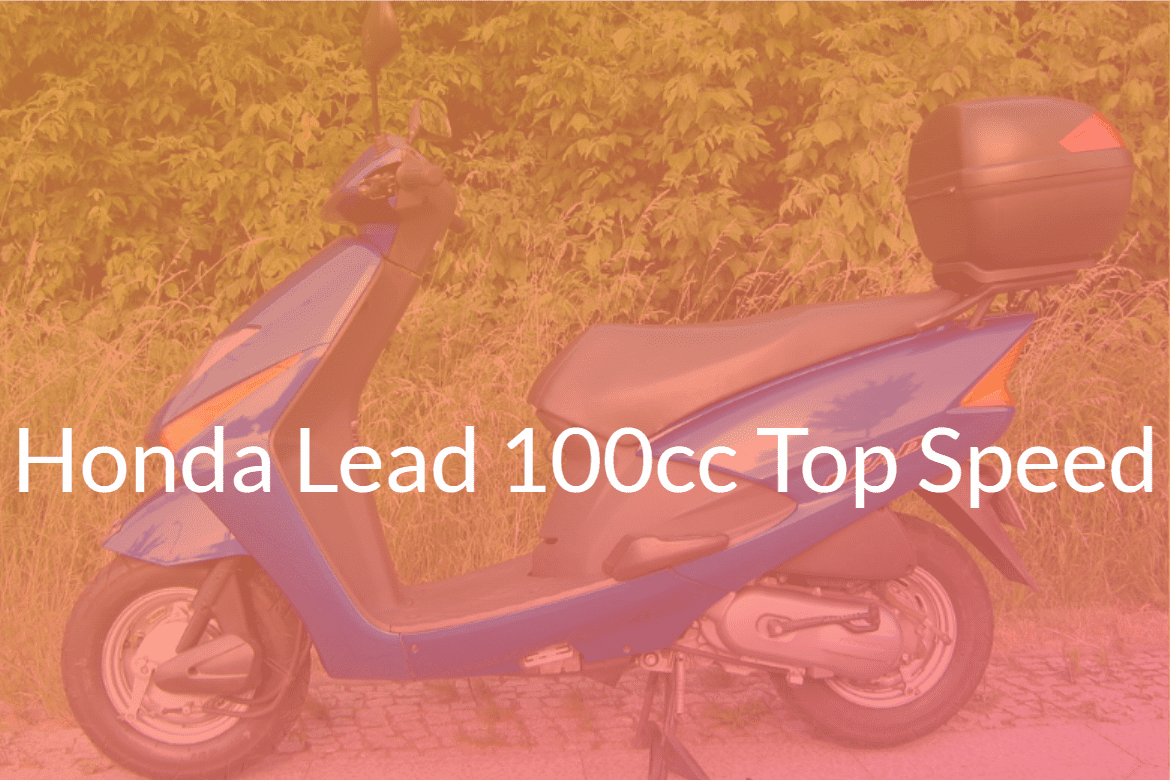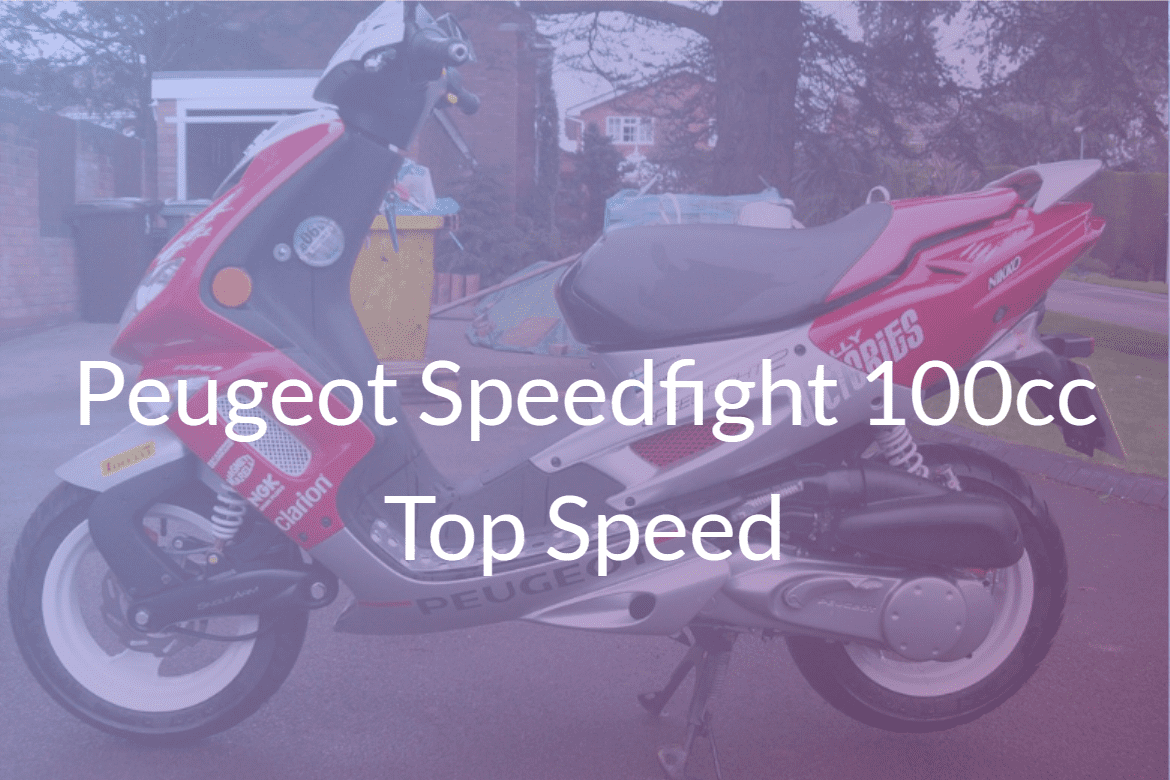If you’re thinking about buying a moped and want to know how fast 50cc mopeds go, you’re in the right place. If you’re just wondering, or perhaps your child’s wanting a moped, or whatever reason the reason is that you’ve asked the question ‘how fast do 50cc mopeds go?‘, you will find the answer here.
In this article, we’ll reveal the surprising top speed of 50cc mopeds and go into some depth on it, most websites will simply offer you the restricted speed, but we’ve done the research, so you done have to! We’ll cover restricted speed, derestricted speed, the fastest production 50cc and the world’s fastest 50cc!
If this article isn’t specific enough for you, then contained within this article are links that will take you to separate articles we’ve written on the top speed of individual makes and models, from brands like Aprilia, Vespa, Piaggio, Honda, Yamaha, and all your favorites. If you need to know more about the top speed of different cc mopeds, then just click here.
How Fast Do 50cc Mopeds Go?
Out of the box, a 50cc moped will come with its top speed restricted or limited. This is to comply with various laws around the world governing what a moped is, as well as putting some limitations on engine size and speed.
A 50cc moped has a restricted top speed of 30 to 35 miles per hour (48 to 57 kilometers per hour), actually achieving this top speed will depend on factors such as the rider’s weight, the terrain, and the weather conditions. Different makes and models have slightly different top speeds, but as a rule, in restricted format, all 50cc mopeds will be close to the top speed above.
This isn’t to say that 30-35mph is the maximum top speed of a 50cc moped, in actual fact, some can zip along much, much faster!
If you want you moped to move faster than 30-35mph, then derestriction is the key. Derestricted top speed will be covered in the next section of this article, and you won’t believe the speed of the world’s fastest 50cc!!
In the table below are links to articles on the top speed of different mopeds where we cover the restricted and derestricted top speed of each as well as other useful information…
| Yamaha Zuma 50cc | Vespa Primavera 50cc |
| Piaggio Liberty 50cc | Vespa Sprint 50cc |
| Kymco Agility 50cc | Kymco Super 8 50cc |
| Peugeot Kisbee 50cc | Honda Ruckus 50cc |
| Sym Fiddle 3 50cc | Sym Jet 4 50cc |
How Fast Can Derestricted 50cc Mopeds Go?
How fast do 50cc mopeds go when they’re derestricted? The answer to that question varies a lot depending on make, model and whether the engine is 2-stroke or 4-stroke.
A derestricted 50cc moped can have a top speed of up to 60 miles per hour (96 kilometers per hour), depending on the make and model. Derestricted 2-stroke mopeds are generally faster than 4-strokes, a derestricted 2-stroke should be able to achieve somewhere between 45-60 miles per hour (72-96 kilometers per hour), whereas a derestricted 50cc 4-stroke moped will normally achieve 40-45 miles per hour (64-72 kilometers per hour), with some 4-stroke models hitting the 50mph mark.
Whilst it is relatively easy to derestrict a 50cc moped, it is worth checking on the laws in your area, as in some places around the world, derestricting a moped is illegal.
What Is The Fastest 50cc Moped?
The fastest 50cc moped available today is the Aprilia RS50, which can have a derestricted top speed of an incredible 65 miles per hour (105 kilometers per hour). The Aprilia RS50 is unfortunately no longer available to buy from new, but you can still get good used examples fairly easily.
The Aprilia RS50 was built with style and speed in mind, and reigned champion in many regions of the world for many years. If you do find a good, used RS50, as with all derestricted 50cc mopeds, be careful of the laws in your area and check whether you are eligible to drive this moped.
If you’re looking for something different from the RS50, more like a traditional moped without gears, just rev and go, then the Yamaha Aerox 4 is another fast 50cc moped to consider. With a user reported derestricted top speed of up to 55 miles per hour (88 kilometers per hour) on a good day, this moped is a fast, stylish little machine. Again, new versions are unfortunately unavailable, however decent used examples are abundant.
Both the Aprilia RS50 and the Yamaha Aerox 4 are 2-stroke mopeds, which is how they are able to produce such stunning top speeds. As the world moves away from 2-stroke pollution, mopeds are more frequently utilizing 4-stroke engines, which just don’t offer the same top speeds.
Will a 2-stroke 50cc moped that’s been kept in good condition be worth a lot of money in the coming years? Now that’s a good question…
What Is The Fastest 50cc In The World?
Currently, the 50cc land speed record belongs to John Buddenbaum, a metal fabricator and Eric Noyes, a NASA engineer. In 2008 the pair (Buddfab team) set a new world record of 144.891 miles per hour (233.179 kilometers per hour) onboard their streamliner at the Bonneville Salt Flats.
The bike (which started life as an Aprilia RS50 and has a Minarelli AM6 base engine) looks nothing like a conventional motorbike, it’s a streamliner that was designed and built specifically for the purpose of breaking the 50cc land speed record. It is crazy to think that such a small motor can produce so much speed! Check out the history of the 50cc land speed record here.
Since we’re talking about world records, here’s another couple that might interest you…
The Farthest Distance Travelled on a 50cc Moped
The longest distance ever travelled on a 50cc moped in one trip is a whopping 10,209 miles (16,429 kilometers). Between the 23rd September 2021 and the 28th November 2021, Jonathon Roberts of the USA drove his 50cc Honda Ruckus from Seattle, Washington to the southern tip of Panama and back up to Miami, Florida.
The Farthest Distance Travelled in 24 hours on a 50cc Moped
In the 24 hours between the 23rd and 24th August 2005, Mark ‘Brownie’ Brown from Australia drove his 50cc Yamaha Aerox 576.6 miles (928 kilometers) at the Grand Prix Training Centre, South Morang, Victoria, Australia. Thats an average speed of 24 miles per hour (38.6 kilometers per hour) over the 24 hours.
FAQ’s
What’s faster 50cc or 125cc?
In general, a 125cc engine is faster than a 50cc engine. This is because a 125cc engine has a larger displacement, which means it can burn more fuel and air in each combustion cycle, generating more power and speed.
Why are 50cc mopeds restricted?
50cc mopeds are often restricted to comply with laws and regulations that limit the speed and power of certain types of vehicles, especially those designed for novice or young riders.
Do I need a CBT for a 50cc moped in the UK?
Yes, in the UK, you need to complete a Compulsory Basic Training (CBT) course before you can legally ride a 50cc moped on the road with L-plates. However, if you passed your car driving test before 1st February 2001, you may be entitled to ride a 50cc moped without a CBT certificate.
Can 50cc mopeds go 60mph?
Yes, some 50cc mopeds can reach speeds of 60mph, however they would likely have some form of tuning or performance parts fitted to do so.
What HP is a 50cc?
The horsepower (HP) of a 50cc engine can vary depending on several factors but in general, a 50cc engine produces around 2-5 HP (1.5-3.7 kW) of power.
Wrapping Up
A 50cc moped will normally be restricted to a speed of 30-35 miles per hour. Mopeds can technically go faster, but they will need to be derestricted to do so, which may make them illegal to ride in some parts of the world.
Derestricted 50cc mopeds have can achieve speeds of between 40 and 60 miles per hour depending on the make and model and if its got a 2-stroke or 4-stroke engine. Moped top speeds are also heavily affected by several factors such as rider weight, weather and road conditions.
The fastest production moped is an Aprilia RS50 which has been known to hit speeds of up to 65 miles per hour, whereas the fast 50cc in the world broke 144 miles per hour!
If you’re into mopeds, our growing website has a wealth of information on it that we know you will find interesting. Check out our other articles to find out more and stay informed!
Rhys is a qualified mechanic with a passion for mopeds and engines of all sizes. He has owned and worked on mopeds since his early teens and is dedicated to sharing his knowledge and helping others get the best of their machines. He currently owns 1 fully intact moped but has a few others in pieces in the workshop. More about Rhys




